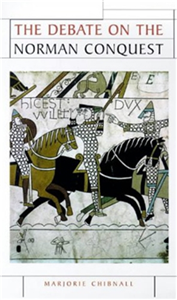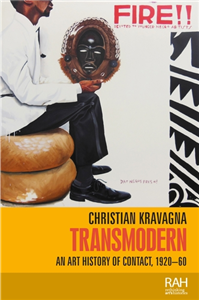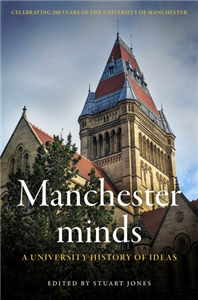Your Search Results
-
 Trusted Partner
Trusted Partner
-
华东师范大学出版社 East China Normal University Press
East China Normal University Press Ltd. (ECNUP), established in 1957, is one of the two oldest publishers in China specializing in education publicationsas well as the top-ranking publisher in education. ECNUP is the top publishing house in Shanghai, and ranks among China's top 100 presses.
View Rights Portal
-
Promoted ContentAugust 1997
Die Stimmen des alten Meeres
Roman
by Norman Lewis, Dieter Hildebrandt, Cees Nooteboom
Cees Nooteboom wurde am 31. Juli 1933 in Den Haag geboren. 1955 erschien sein erster Roman Philip en de anderen, der drei Jahre später auch in Deutschland unter dem Titel Das Paradies ist nebenan veröffentlicht wurde (und 2003 in der Neuübersetzung von Helga van Beuningen unter dem Titel Philip und die anderen erneut eine große Lesergemeinde fand). Nooteboom berichtete 1956 als junger Autor über den Ungarn-Aufstand, 1963 über den SED-Parteitag, und fünf Jahre später über die Studentenunruhen in Paris (gesammelt in dem Band Paris, Mai 1968). Seine inzwischen in mehreren Bänden gesammelten Reiseberichte, die weniger Reportagen als vielmehr von genauer Beobachtung getragene, reflektierende Betrachtungen sind, festigten Nootebooms Ruf als Reiseschriftsteller. 1980 fand Nooteboom zurück zur fiktionalen Prosa und erzielte mit dem inzwischen auch verfilmten Roman Rituale (Rituelen) große Erfolge. Sein umfangreiches Werk, das in viele Sprachen übersetzt ist, umfasst Erzählungen, Berichte, Gedichte und vor allem große Romane wie Allerseelen (Allerzielen). Die zehn Bände seiner Gesammelten Werke enthalten neben den bereits publizierten Büchern zahlreiche erstmals auf deutsch vorliegende Texte. Der Quarto-Band Romane und Erzählungen versammelt die gesamte fiktionale Prosa des Autors. Cees Nooteboom lebt in Amsterdam und auf Menorca.
-
Promoted Content
-
 Trusted Partner
1981
Trusted Partner
1981Die Meduse und die Schnecke
Gedanken eines Biologen über die Mysterien von Mensch und Tier
by Thomas, Lewis / Englisch Theimer, Walter
-
 Trusted Partner
Trusted Partner
-
 Trusted Partner
Humanities & Social SciencesNovember 2023
Trusted Partner
Humanities & Social SciencesNovember 2023Rethinking Norman Italy
Studies in honour of Graham A. Loud
by Joanna Drell, Paul Oldfield
This volume on Norman Italy (southern Italy and Sicily, c. 1000-1200) honours and reflects the pioneering scholarship of Graham A. Loud. An international group of scholars reassesses and recasts the paradigm by which Norman Italy has been conventionally understood, addressing varied subjects across four key themes: historiographies, identities and communities, religion and Church, and conquest. The chapters revise and refine our understanding of Norman Italy in the eleventh and twelfth centuries, demonstrating that it was not just a parochial Norman or Mediterranean entity but also an integral player in the medieval mainstream.
-
 Trusted Partner
Humanities & Social SciencesJune 2021
Trusted Partner
Humanities & Social SciencesJune 2021Rethinking Norman Italy
by Joanna Drell, Paul Oldfield, C. E. Beneš
-
 Trusted Partner
Humanities & Social SciencesJune 1999
Trusted Partner
Humanities & Social SciencesJune 1999The debate on the Norman Conquest
by Marjorie Chibnall, Roger Richardson
The debate on the Norman Conquest is still ongoing. Because of the great interest that has always been shown in the subject of conquest and its aftermath, interpretations have been numerous and conflicting; students bewildered by controversies may find this book a useful guide through the morass of literature. In the medieval period writers were still deeply involved in the legal and linguistic consequences of the Norman victory. Later the issues became direcly relevant to debates about constitutional rights; the theory of a "Norman yoke" provided first a call for revolution and, by the 19th century, a romantic vision of a lost Saxon paradise. When history became a subject for academic study controversies still raged round such subjects as Saxon versus Norman institutions. These have gradually been replaced in a broader social setting where there is more room for consensus. Interest has now moved to such subjects as peoples and races, frontier societies, women's studies and colonialism. Changing perspectives have shown the advantage of studying a period from the late 10th to the early 13th century rather than one beginning in 1066. ;
-
 Trusted Partner
The ArtsJune 2022
Trusted Partner
The ArtsJune 2022Transmodern
An art history of contact, 1920–60
by Christian Kravagna, Marsha Meskimmon, Amelia Jones,
How can we reconfigure our picture of modern art after the postcolonial turn without simply adding regional art histories to the Eurocentric canon? Transmodern examines the global dimension of modern art by tracing the crossroads of different modernisms in Asia, Europe and the Americas. Featuring case studies in Indian modernism, the Harlem Renaissance and post-war abstraction, it demonstrates the significance of transcultural contacts between artists from both sides of the colonial divide. The book argues for the need to study non-western avant-gardes and Black avant-gardes within the west as transmodern counter-currents to mainstream modernism. It situates transcultural art practices from the 1920s to the 1960s within the framework of anti-colonial movements and in relation to contemporary transcultural thinking that challenged colonial concepts of race and culture with notions of syncretism and hybridity.
-
 Trusted Partner
The ArtsJune 2022
Trusted Partner
The ArtsJune 2022Transmodern
An art history of contact, 1920–60
by Christian Kravagna, Marsha Meskimmon, Amelia Jones,
How can we reconfigure our picture of modern art after the postcolonial turn without simply adding regional art histories to the Eurocentric canon? Transmodern examines the global dimension of modern art by tracing the crossroads of different modernisms in Asia, Europe and the Americas. Featuring case studies in Indian modernism, the Harlem Renaissance and post-war abstraction, it demonstrates the significance of transcultural contacts between artists from both sides of the colonial divide. The book argues for the need to study non-western avant-gardes and Black avant-gardes within the west as transmodern counter-currents to mainstream modernism. It situates transcultural art practices from the 1920s to the 1960s within the framework of anti-colonial movements and in relation to contemporary transcultural thinking that challenged colonial concepts of race and culture with notions of syncretism and hybridity.
-
 Trusted Partner
The ArtsJune 2022
Trusted Partner
The ArtsJune 2022Transmodern
An art history of contact, 1920–60
by Christian Kravagna, Marsha Meskimmon, Amelia Jones,
How can we reconfigure our picture of modern art after the postcolonial turn without simply adding regional art histories to the Eurocentric canon? Transmodern examines the global dimension of modern art by tracing the crossroads of different modernisms in Asia, Europe and the Americas. Featuring case studies in Indian modernism, the Harlem Renaissance and post-war abstraction, it demonstrates the significance of transcultural contacts between artists from both sides of the colonial divide. The book argues for the need to study non-western avant-gardes and Black avant-gardes within the west as transmodern counter-currents to mainstream modernism. It situates transcultural art practices from the 1920s to the 1960s within the framework of anti-colonial movements and in relation to contemporary transcultural thinking that challenged colonial concepts of race and culture with notions of syncretism and hybridity.
-
 Trusted Partner
Humanities & Social SciencesSeptember 2024
Trusted Partner
Humanities & Social SciencesSeptember 2024Manchester minds
A university history of ideas
by Stuart Jones
A bicentennial celebration of brilliant thinkers from The University of Manchester's history. The year 2024 marks two centuries since the establishment of The University of Manchester in its earliest form. The first of England's civic universities, Manchester has been home and host to a huge number of influential thinkers and generated world-changing ideas. This book presents a rich account of the remarkable contribution that people associated with The University of Manchester have made to human knowledge. A who's who of Manchester greats, it presents fascinating snapshots of pioneering artists, scholars and scientists, from the poet and activist Eva Gore-Booth to the economist Arthur Lewis, the computer scientist Alan Turing and the physicist Brian Cox.
-
 Trusted Partner
Literature & Literary StudiesJanuary 2013
Trusted Partner
Literature & Literary StudiesJanuary 2013The lives of Thomas Becket
by Michael Staunton
This collection tells the story of Thomas Becket's turbulent life, violent death and extraordinary posthumous acclaim in the words of his contemporaries. The only modern collection from the twelfth-century Lives of Thomas Becket in English and features all his major biographers, including many previously untranslated extracts. Providing both a valuable glimpse of the late twelfth-century world, and an insight into the minds of those who witnessed the events. By using contemporary sources, this book is the most accessible way to study this central episode in medieval history. Thomas Becket features prominently in most medieval core courses. This book allows the subject to be taught as never before, and is highly suitable as a set text.
-
 Trusted Partner
The ArtsJanuary 2024
Trusted Partner
The ArtsJanuary 2024Transmodern
An art history of contact, 1920–60
by Christian Kravagna,
How can we reconfigure our picture of modern art after the postcolonial turn without simply adding regional art histories to the Eurocentric canon? Transmodern examines the global dimension of modern art by tracing the crossroads of different modernisms in Asia, Europe and the Americas. Featuring case studies in Indian modernism, the Harlem Renaissance and post-war abstraction, it demonstrates the significance of transcultural contacts between artists from both sides of the colonial divide. The book argues for the need to study non-western avant-gardes and Black avant-gardes within the west as transmodern counter-currents to mainstream modernism. It situates transcultural art practices from the 1920s to the 1960s within the framework of anti-colonial movements and in relation to contemporary transcultural thinking that challenged colonial concepts of race and culture with notions of syncretism and hybridity.
-
 Trusted Partner
Trusted Partner
-
 Trusted Partner
Trusted Partner
-
 Trusted Partner
March 2014
Trusted Partner
March 2014Der unvermeidliche Tod des Lewis Winter
Thriller
by MacKay, Malcolm / Englisch Gunkel, Thomas
-
 Trusted Partner
September 2013
Trusted Partner
September 2013Die irgendwie richtige Richtung
Eine Pilgerreise
by Gideon Lewis-Kraus, Thomas Pletzinger
»Jakobsweg – Zielstrebigkeit – 10. Juni«. Was soll das? Er kann sich beim besten Willen nicht mehr erinnern, warum er das in sein Notizbuch geschrieben hat. Gideon ruft seinen Freund Tom an, und der weiß es. Sie sind zum gemeinsamen Pilgern verabredet. Am 10. Juni geht es los. Der Weg ist das Ziel, alles andere ist egal. Hauptsache, die Richtung stimmt, irgendwie. Santiago di Compostela ist weit entfernt, aber Berlin mit seinen Galerieeröffnungen, Bars und Clubs glücklicherweise auch. Pilgernd will er sich von den Zwängen der grenzenlosen Freiheit befreien. Und der ersten großen Krise seines Lebens entkommen, in die er geriet, als der Vater, ein schwuler Rabbi aus New Jersey, die Familie verließ, um mit seinem Freund zusammenzuziehen. Pilgernd kommt er dem eigenen Glück und dem Mysterium seiner Familie, Vaters verborgenem Leben, auf die Spur. Zum Schluss hat sich etwas verändert. Er hat sich verändert. Er hat das Rätsel seines Lebens gelöst. »Im Verlauf eines Jahres, im Verlauf dieses schönen, lebensklugen, drogen-, freundschaft- und sexverherrlichenden Buches wird Gideon Lewis-Kraus geradezu in eine Pilgerschaftsabhängigkeit geraten und von Ort zu Ort ziehen, fort aus der Welt der unendlichen Freiheiten oder der unendlichen Abhängigkeiten, hinüber in die Wanderwelt der Notwendigkeit.« Volker Weidermann, FAS
-
 Trusted Partner
Humanities & Social SciencesMarch 2017
Trusted Partner
Humanities & Social SciencesMarch 2017The French empire at War, 1940–1945
by Martin Thomas
The French empire at war draws on original research in France and Britain to investigate the history of the divided French empire - the Vichy and the Free French empires - during the Second World War. What emerges is a fascinating story. While it is clear that both the Vichy and Free French colonial authorities were only rarely masters of their own destiny during the war, preservation of limited imperial control served them both in different ways. The Vichy government exploited the empire in an effort to withstand German-Italian pressure for concessions in metropolitan France and it was key to its claim to be more than the mouthpiece of a defeated nation. For Free France too, the empire acquired a political and symbolic importance which far outweighed its material significance to the Gaullist war effort. As the war progressed, the Vichy empire lost ground to that of the Free French, something which has often been attributed to the attraction of the Gaullist mystique and the spirit of resistance in the colonies. In this radical new interpretation, Thomas argues that it was neither of these. The course of the war itself, and the initiatives of the major combatant powers, played the greatest part in the rise of the Gaullist empire and the demise of Vichy colonial control.
-
 Trusted Partner
December 2009
Trusted Partner
December 2009Der Briefwechsel Thomas Bernhard/Siegfried Unseld
by Thomas Bernhard, Siegfried Unseld, Raimund Fellinger, Martin Huber, Julia Ketterer
30 Jahre alt, ohne Resonanz auf seine bis dahin veröffentlichten drei Gedichtbände, vom eigenen überragenden schriftstellerischen Können allerdings überzeugt, schreibt Thomas Bernhard im Oktober 1961 an Siegfried Unseld: "Vor ein paar Tagen habe ich an Ihren Verlag ein Prosamanuskript geschickt. Ich kenne Sie nicht, nur ein paar Leute, die Sie kennen. Aber ich gehe den Alleingang." Obwohl der Suhrkamp Verlag das Manuskript ablehnte, gingen der Alleingänger und der Verleger seit dem Erscheinen von Bernhards erstem Roman "Frost" 1963 gemeinsam den Weg, der den Autor in die Weltliteratur führte. In den etwa 500 Briefen zwischen beiden entwickelt sich ein einzigartiges Zwei-Personen-Schauspiel: Mal ist es eine Tragödie, wenn etwa Bernhard die aus seinen Werken bekannten Schimpftiraden auf den Verleger losläßt, der seinerseits auf die Überzeugungskraft des Arguments setzt. Dann gibt Bernhard ein Kammerspiel mit Unseld als Held – 1973 schreibt er ihm: "mit grösster Aufmerksamkeit, mit allen Möglichkeiten, gehe ich gern mit Ihnen." 1984 agieren beide, bei der Beschlagnahme von "Holzfällen", als Kämpfer für die Literatur in einem von Dritten inszenierten Schurkenstück. Es dominiert das Beziehungsdrama: Der Autor stellt die für sein Werk und seine Person unabdingbaren Forderungen. Der Verleger seinerseits weiß, daß gerade bei Bernhard rücksichtslose Selbstbezogenheit notwendige Voraussetzung der Produktivität ist. Solch einen dramatischen Briefwechsel zwischen Autor und Verleger, in dem bei jeder Zeile alles auf dem Spiel steht, kennt das Publikum bislang nicht.
-
 Trusted Partner
Trusted Partner



























